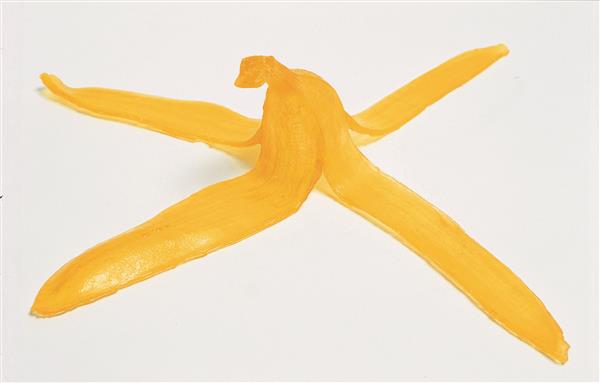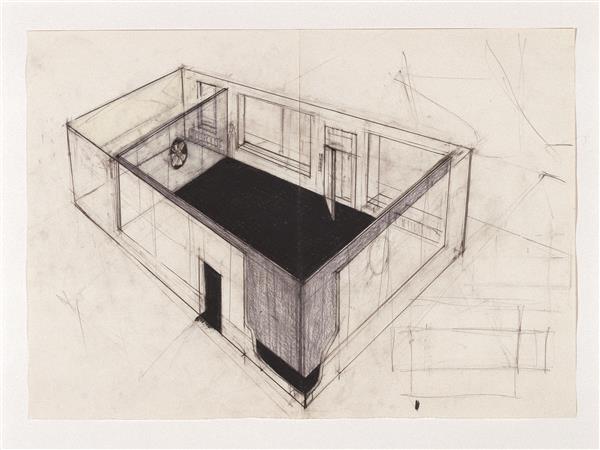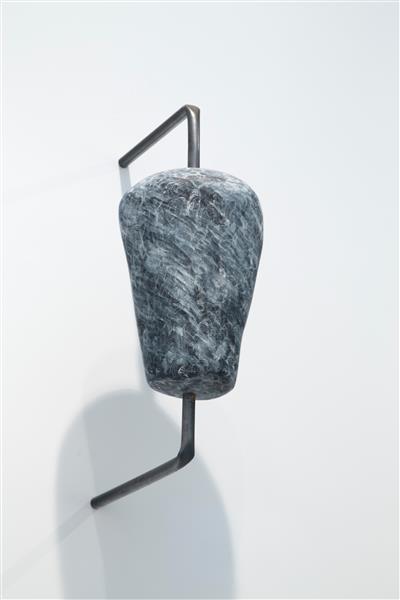The Banana Skin in the Hall of Mirrors
Angus Fairhurst
India ink and pencil on paper
141 × 107.5 cm (framed)
1998
Acquisition 1999
Inv. No. 0056b
The title of the work already refers to the banana skin, which lies at the work’s focus. The skin lies in an elegant hall of mirrors as, as if in a jewellery case. Each of the mirrors arranged in a circle reflects the skin and the reflection of the skin, again and again, into infinity.
The organic refuse in the hall of mirrors makes Fairhurst’s conviction clear that, from today’s point of view, nature can only be considered as cultural construct and as unification with culture. In order to illustrate this idea, the artist likes to use very simple systems of organisation, such as repetition. He seeks out a strikingly simple motive, and intensifies it by mean of levels, superimpositions and endless serialisation. The principle of action always plays an important role – to make grey brush strokes into a grid structure would be an action of this nature, or boring holes in postcards, or even taking schematic drawings, scanning them into a computer and turning them into an animation sequence.
“A number of the things I’ve made,” says Fairhurst, “have got to do with processes: often it is a process of repetition. Yes, I think all my work works on the time level.” Thus, he is also concerned with countering conventional precepts and expectations of art. With the drawing Fairhurst confuses the viewer with a whirl of clockwise and counter-clockwise movements, revolution and counter-revolution. It is so intense, so that we decided to acquire a three-dimensional banana version from polyurethane in order to make sufficient acknowledgement of the visual excursion from drawing to sculpture and back again.
Georg Kargl, 2005 (translation: Tim Sharp)
Continue readingExhibitions
Nothing But Pleasure, BAWAG Foundation, Vienna, 2006
Publications
Nothing But Pleasure, BAWAG Foundation, 30.6.2006 – 26.8.2006, Vienna 2006, p. s. p.
evn sammlung 95–05, Cologne 2005, p. 93
evn sammlung. Ankäufe 1997 – 1999, Maria Enzersdorf 1999, p. 16


